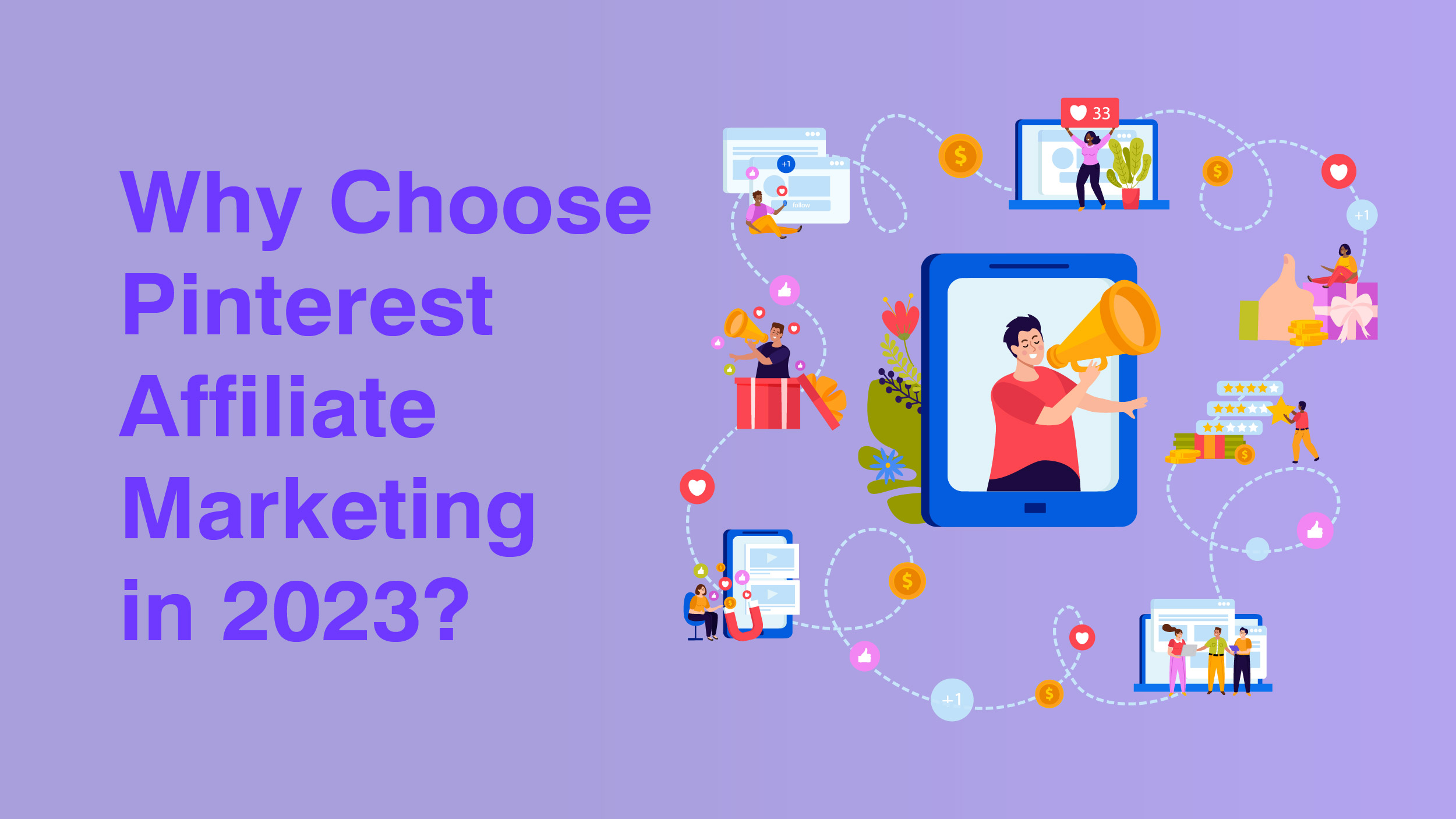Pinterest is like a goldmine for affiliate marketers! It’s a social platform that’s all about eye-catching visuals and it’s a hub for everything artsy, crafty, and design-related.
While many affiliate marketers stick to platforms like Facebook and Twitter, they’re missing out on a massive audience by not opting for Pinterest affiliate marketing.
On Pinterest, users are actively seeking inspiration and are often in a buying mindset. As an affiliate marketer, your main gig is to direct them towards your affiliate products.
If you’re not already on Pinterest, you’re leaving potential earnings on the table.
Not sure where to start? This article will walk you through every step to help you kick off your Pinterest journey and start raking in the rewards. Let’s get rolling!
What is Pinterest Affiliate Marketing?
Pinterest is widely considered the leading platform for finding inspiration across various categories such as fashion, travel, and home decor. On Pinterest, users can explore and save content in the form of “pins,” which are essentially images linked to external sources.
The concept of Pinterest affiliate marketing aims to enable individuals to generate virtual boards using these pins. Many affiliate marketers utilize Pinterest as a means to direct traffic towards their affiliated content. Undoubtedly, when considering platforms for showcasing affiliated content, Pinterest should be given high importance.
Why Choose Pinterest Affiliate Marketing in 2023?

● The Ultimate Visual Search Engine
Pinterest is a visually-driven search engine with social features. It had 445 million active users in Q3 2022 and boasts 1 billion unique monthly sessions. Over 70% are women, spending an average of 14.2 minutes on the platform. Additionally, nearly 40% have a household income over $100,000, indicating strong purchasing power. This makes Pinterest a lucrative space for affiliate marketers.
● Less Time-Intensive
Pinterest simplifies affiliate marketing. Create eye-catching pins to recommend products effortlessly. It’s a time-saver compared to writing lengthy blog posts or reviews.
● A New Revenue Stream
If you are already leveraging Twitter and Facebook for affiliate marketing purposes, then Pinterest can serve as an exciting new platform for you to explore and expand your reach.
Simply sign up on the platform and establish a loyal community. Compared to Facebook or Twitter, users on Pinterest demonstrate a higher likelihood of making purchases based on your recommendations.
Also Read: Digital Content Management: The Key To Online Success!
How to Start Affiliate Marketing on Pinterest?
Now, let’s begin your Pinterest affiliate marketing journey with this step-by-step guide.
Step: 1: Set Up Your Pinterest Profile
Ensure that your Pinterest account is properly set up for affiliate marketing. Switch to a business account for access to vital features like Pinterest Analytics. Additionally, provide a concise description of yourself and your content in your profile.
Step 2: Identify High-Paying Affiliate Opportunities
Next, seek out niche-aligned affiliate programs for Pinterest. Opt for those with high commissions, strong reputations, and products you truly endorse. Authenticity is crucial in Pinterest affiliate marketing.
Step 3: Generate Engaging Pins
After joining an affiliate program, craft pins with top-notch images of the product. Include a captivating description with pertinent keywords for discoverability. Keep in mind that Pinterest thrives on visuals, so the more appealing your pin is, the higher the potential for clicks and revenue in your Pinterest affiliate marketing endeavors.
Step 4: Link Affiliates to Your Pins
Include your affiliate link in the ‘Website’ field while creating your pin. This ensures that when users click on your pin, they’ll be taken to the product page through your affiliate link. Verify that the link functions properly before posting the pin.
Step 5: Share Your Pins
Share your pins on fitting boards. Consider making dedicated boards for affiliate products. Schedule pins for prime visibility.
Successful Pinterest Affiliate Marketing Examples
● Jessie on a Journey
Jessie Festa, a NYC-based travel blogger and affiliate marketer, offers solo travel tips, blogging, and affiliate marketing guidance. On Pinterest, she shares blog links with videos, forging deeper connections with her audience.
● Taverna Travels
Taylor Taverna, a New York-based travel blogger and content creator, uses Pinterest to boost traffic to her blog, Taverna Travels. She shares travel advice for 70+ countries but avoids direct affiliate links on Pinterest, using keywords sparingly in pin descriptions to stand out from other marketers.
● Wander Her Way
Denise, a former corporate marketer turned travel blogger at Wander Her Way, shares captivating pins on Pinterest. These pins lead users to detailed travel guides on her blog, along with affiliate links for various travel services. This approach provides users with value before promoting affiliate products, enhancing the overall experience.
Concluding Thoughts
Pinterest is undeniably a standout platform for affiliate marketing. Despite Facebook and Instagram’s larger user base, Pinterest remains unique in its own right. Although Pinterest affiliate marketing may be a bit challenging, the potential for high returns is substantial. Once you start driving significant traffic to your pins, all your hard work will pay off.

